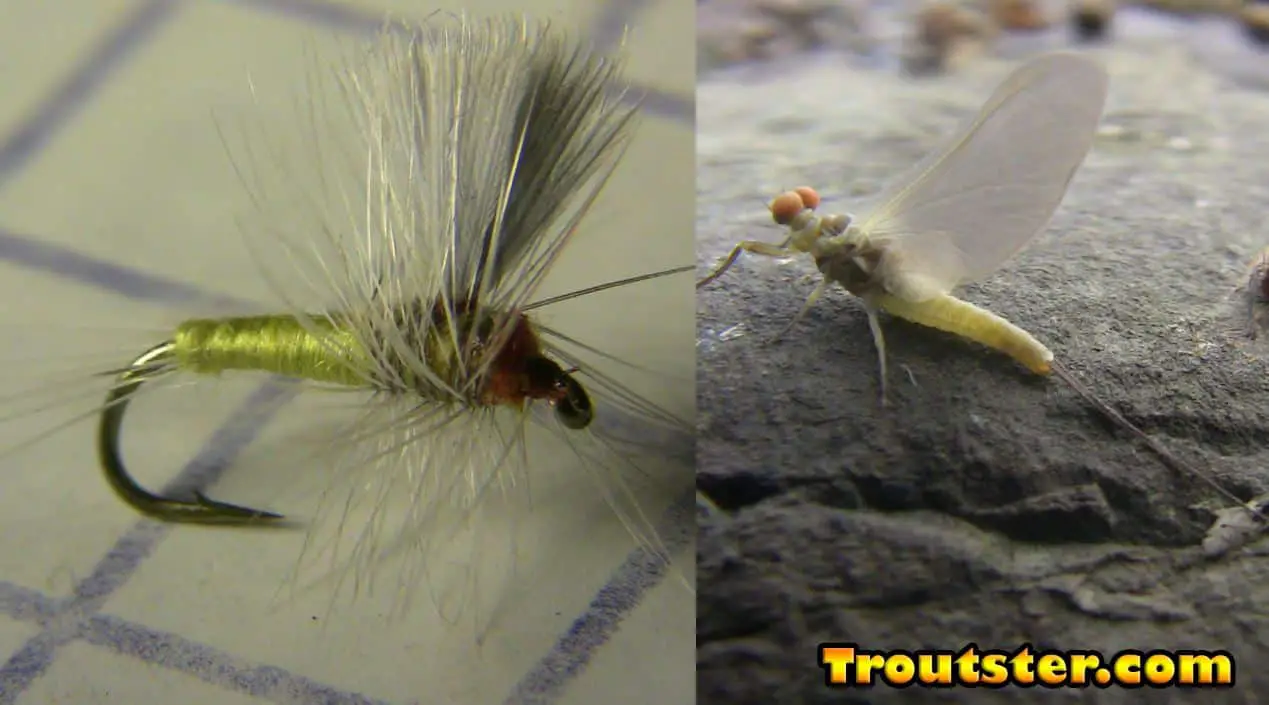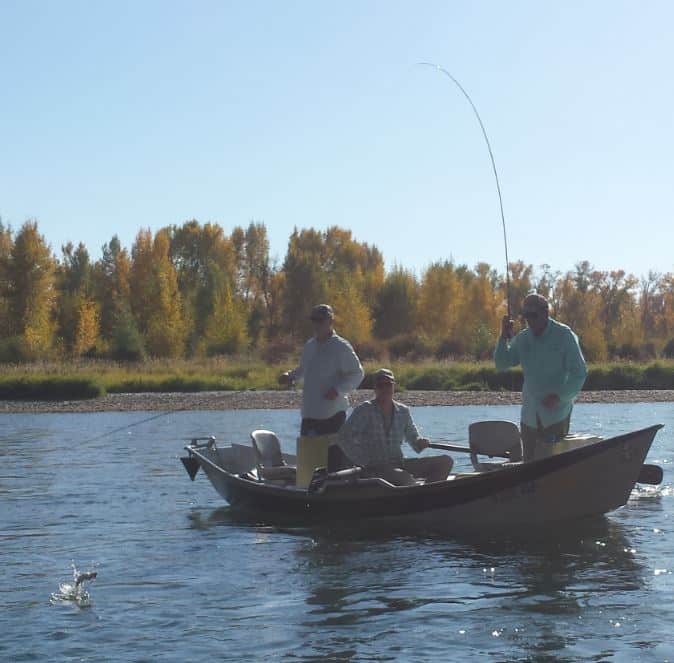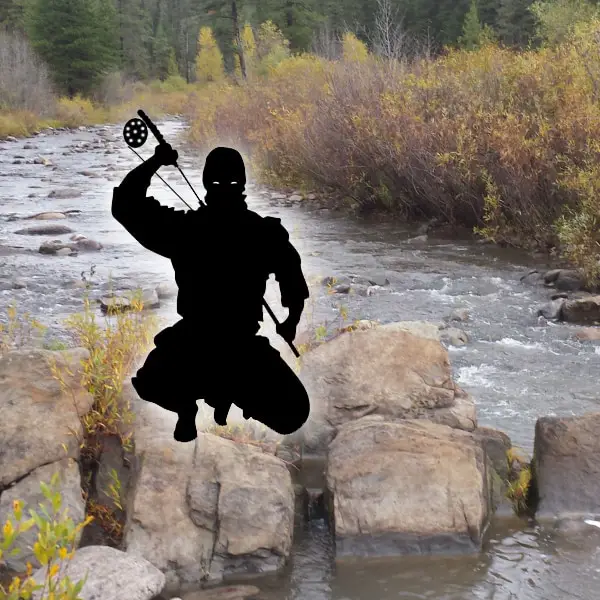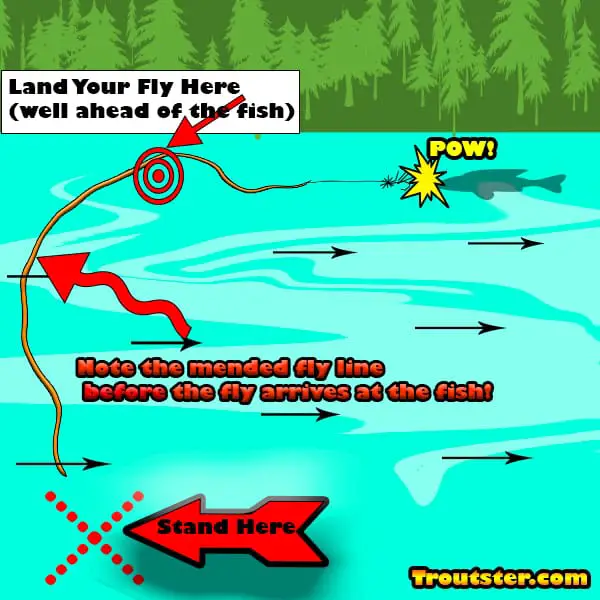Guide to Becoming a Better Dry Fly Fisherman
When people think of fly fishing, they automatically envision the casting of a small dry fly on a picturesque stream. In order to pull off that perfect cast, drift and convincing of the trout to eat your offering, it will depend on several factors. In this guide I will offer my insight into what steps to take to become a better dry fly fisherman and what you need to do to catch actively feeding fish on dries.

Matching the Hatch
This is a pretty basic idea that we have all heard—so I’ll only spend a second going over it. In order to catch the feeding fish, you will want to replicate the natural insects you see on the water. Look closely at the trees and in the air and try to catch some local insects. Doing your best to match the size and coloration of these insects will instantly help you have a better chance of catching trout on dry flies. There might be times where the insects in the trees and bushes aren’t what the trout are feeding on, so the ideal location to find these flies is on the water. If you need to, bend over and stare at the water as it flows by until you find what you are looking for. If you have a mesh catch and release net, you can use that to easily scoop up flies floating by.
The more fishing pressure an area gets, the more “picky” the trout will probably be. While fishing for relatively inexperienced trout, you will be more likely to have them fall for a less than perfect looking fly. If the trout are in slow water and see a lot of fishing pressure, you might need a perfect fly in the exact color and size to get a large fish to eat it.
I wrote a post last year that involves bringing along markers on your fishing trips to color your flies on the river—carrying a set of sharpies will certainly save you money by not needing every color and size of every fly that might be hatching.
 Finding the Fish You Want
Finding the Fish You Want
The best method for finding a large trout feeding, is to watch the water for smaller, more subtle strikes. A large fish will probably not make a huge splash—they will be more likely to slowly rise to the surface and sip in food. The splashy strikes are almost always smaller less experienced fish. The big trout you want to hook is barely noticeable—hardly breaking the surface of the water as it slowly eases up to the top and effortlessly eats the hatching insects.
During a large hatch, there will possibly be many fish feeding. One thing I would advise you not to do is randomly cast, hoping you will land in front of a large feeding fish (Aka blind casting). There is a very good chance you will spook the big fish by landing on top of them, or pulling out your fly above their head.
Approaching or “Stalking” a Feeding Trout
 Once you find a feeding trout that you want to catch, you will have to be sneaky to get into casting position.
Once you find a feeding trout that you want to catch, you will have to be sneaky to get into casting position.
- Your best bet would be to approach from downstream of the fish, because it will be watching upstream for approaching food. The care you need to take getting into position will need to be relative to the size of the river and speed of the water. If the current is fast and the surface of the water is quite broken, you will be able to get a good casting angle easily. Slow water and smaller rivers will call for much more care during your approach.
- It is always a good idea to make it to your ideal casting position on dry land. Fish are very sensitive to noises being made underwater. If you have to belly crawl on the bank to pull it off, that’s what you should do.
- You should also pay close attention to which direction your shadow is going. You might be 30 yards from the trout, but if the sun is low behind you; it might be sending your shadow right onto the fish. A shadow will spook a fish just as fast as a bowling ball landing in the water.
- Stay low and keep as far away as you can from the fish. Too often I watch people walk right up to the fish. These fish are VERY aware of danger–don’t mistake them for bluegills at your local pond.
The Ideal Casting Angle
The best angle is slightly upstream of the fish, this angle will allow you to get a good mend in before your fly reaches the trouts feeding area. Once you are upstream of the fish, you will potentially be in the fishes line of sight – be careful!

Mending and Pulling off the Dry Fly Drift
- Mend as soon as your fly hits the water: As you can see in the image above, the fly line is mended before it arrives at the trout. This quick mend ensures that any dragging and unnatural action that takes place with your fly during the mend is done before the fish can see it. If you wait until your fly is almost to the fish before mending, you might send it into the next county because of dragging, or “popping” of the fly.
- Land your fly several feet ahead of the fish: You don’t want to spook the fish with a hard slap of the fly directly on it’s head. If you land well upstream of the fish you will have enough time to give a good solid mend, and your fly will look just like a natural floating it’s way down.
Note: There will occasionally be times where you won’t be able to get a long drag free drift because of weird currents between you and the trout. In these situations it might be necessary to put the fly almost on top of the fish. This will allow you a few seconds of a somewhat natural presentation before the current catches your line and makes your fly drag in a non natural way.
Summary
Dry fly fishing for trout will take a very long time to get near perfect, but with a lot of practice you will be able to catch any trout you want. Most feeding fish prefer to eat nymphs, so if you just don’t see any flies on the water or trout feeding—don’t push it. Once you learn how to match the hatch, stalk the trout, pull off a great drift you will be a very successful dry fly fisherman.

